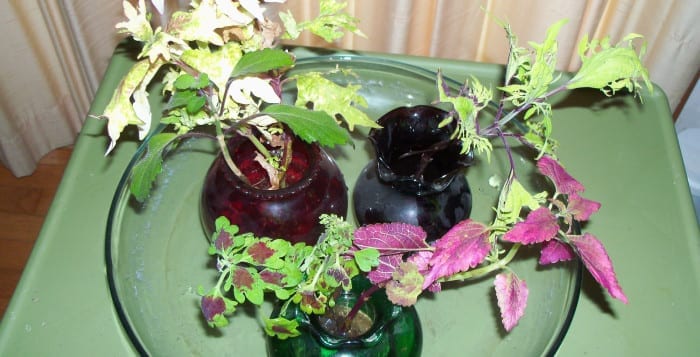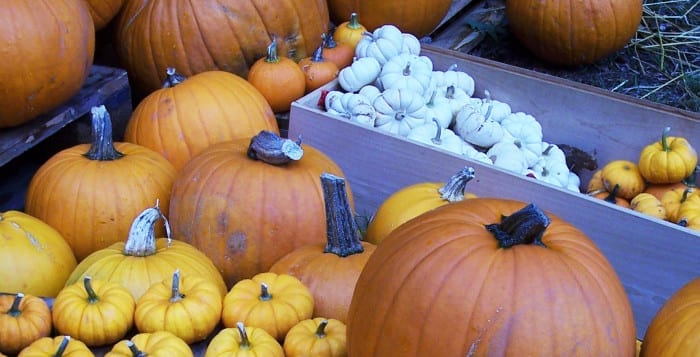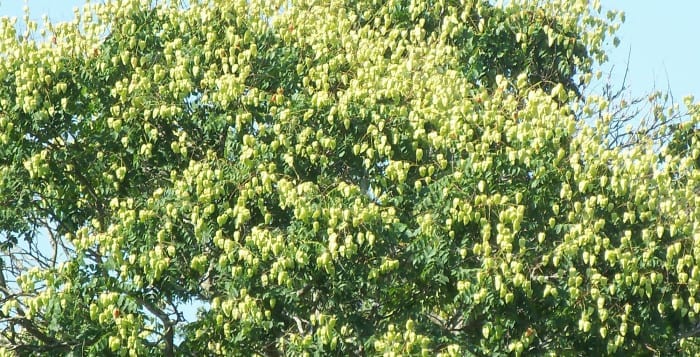By Ellen Barcel
Once a gardener finds a really special plant, one that he or she wants more of, lots more of, the gardener begins to think about how to propagate that plant. Seeds are always a possibility — it’s worth a try — but many seeds do not breed true especially if the mother plant is a hybrid.
If you want a genetic clone — that is, an exact duplicate — you need to propagate the plant vegetatively. Wood cuttings are possible but require some work and care. Isn’t there an easier way to get more of what you have already?
Rooting cuttings in water is truly the easiest way to propagate plants. However, not all plants can be rooted in water.
The houseplants that can be propagated in water include philodendron, pothos and other viney plants. Herbs such as pineapple sage and all variety of mints can also be rooted in water. When the weather gets cold outside consider taking cuttings from begonias, coleus, impatiens, sweet potato vine and even geraniums to overwinter them in water inside. I’ve been told, though can’t verify myself, that African violet leaves will also root in water.
Shrubs hat need a lot of water, such as willows, including pussy willow, will also root easily in water. Some plants, like euonymous, will root just about anywhere. I even had one root behind the shutter on my house against the cedar shakes. Removing it carefully, I was able to plant it in the soil where it is still growing.
Some general guidelines include:
* Select a small container to hold the cuttings. A small colorful vase is particularly attractive when the sun hits the glass.
* Use room temperature water.
* Change the water periodically, say once a week or sooner if it becomes cloudy.
* Keep the water level at the same height from week to week.
* Do not add fertilizer to the water.
* Set the rooting container where it will get partial sun but not get excessively hot if its summer.
* If the end of the cutting turns brown or mushy, it’s beginning to rot. Discard this cutting and try again.
* When enough roots have formed and you move the plant to soil, make sure you use good quality potting soil appropriate for the type of plant if it’s going to be a container plant.
* Use a completely clean planter to help prevent the spread of disease to the new plant.
* Make sure you keep the new plant’s soil wet enough during the transition period. Remember, it’s been growing in pure water for weeks or even months.
Woody stems are more difficult to root in water. You usually need to use rooting hormone and put them in soil. But, if you notice tiny roots forming along the stem of a woody plant, gently bend the stem over to the ground or a pot of soil. Keep the stem pressed against the soil by weighting it down with a rock or brick. This works very well with hydrangeas. If I do this in the spring or summer, I leave the new plant attached to the mother plant until the following spring when I cut it free of the mother plant and dig it up and move it to its new home.
Cactus plants are particularly easy to propagate, but not in water. Take a broken piece, put the end in potting soil designed for cacti, water periodically but not excessively and soon you’ll have a new plant.
Ellen Barcel is a freelance writer and master gardener. To reach Cornell Cooperative Extension and its Master Gardener program, call 631-727-7850.










